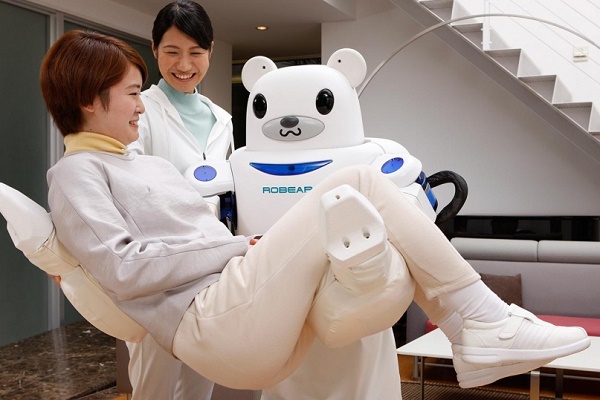So essentially, she researches the different ways that humans interface with autonomous robots and seeks to make those interactions as intuitive and efficient as possible. Luckily for everyone, Anna has a clear vision of what a future where humans and robots work side-by-side will look like.
"There will still be someone who has to hit the "go" button," she said, but once the machines become fully autonomous, they won't need the operator unless they have something to report or they encounter a problem that they aren't sure how to solve. "They can say, you know, 'Hey, we have a question!'" she said, and the human operator can step in and help them. Otherwise, the robots will only need the operator to give them a mission and send them on their way.
This new dynamic might seem like it would limit human interaction with robots, but once the operator releases them into the world, there are a myriad of ways that autonomous UAVs and people can work together. For example, UAVs can sweep large areas of land in a search-and-rescue mission, then call for help once it finds the target. A similar instance of teamwork is already happening in police departments with ground vehicles (as we found out last month); a tele-controlled police robot can travel into a house and allow its human coworkers to see whether it's safe to enter or not. Once police robots gain a degree of autonomy, they'll be able to enter a house, clear the different rooms, and then signal to the team outside that it's safe to enter, all without input from its operator.
Even people without professional training will someday be able to comfortably interface with autonomous machines. Anna brings up the recent buzz in Japan around "helper robots," humanoid robots designed to fill the growing care needs of its elderly population. Right now they remain relatively limited in what they can do, but eventually, these machines will be so autonomous that if someone says "I want a cup of coffee," they'll go into the kitchen, get a mug, fire up the coffee machine, and gently deliver a hot cuppa to the person who requested it.
 | |
|
"You don't have to say, 'okay, here's the kitchen, now go there, now open the cabinet door, now find the second shelf, now grasp the mug without crushing it...' It just does it. It has the necessary knowledge to do it just like a human aide would," Anna said of the forthcoming species of domestic robots.
Natural-language interface—telling the robot "I want coffee" like one would a waiter— between human and robot is another major focus of human factors. The ultimate idea is to abstract the interface into something intuitive for humans, while letting the artificial intelligence do all the tedious plugging in of commands and path-finding.
No matter how naturally we are able to converse with robots, though, none of it matters if we don't feel at ease interacting with them. That's why, Anna emphasizes, it's crucial to have "trust and transparency" in human-robot interactions: for a person to accept the robot as safe, she needs to be able to see and understand the robot's reasoning. Natural-language interface helps with this, as does carefully choosing what level of information the robot relays to the human on a regular basis— too much information is overwhelming, too little can feel uncomfortable.
Human factors research, like humans themselves, is complicated and often messy. With Anna Trujillo at the helm, our relationships with robots don't have to be.

No comments:
Post a Comment